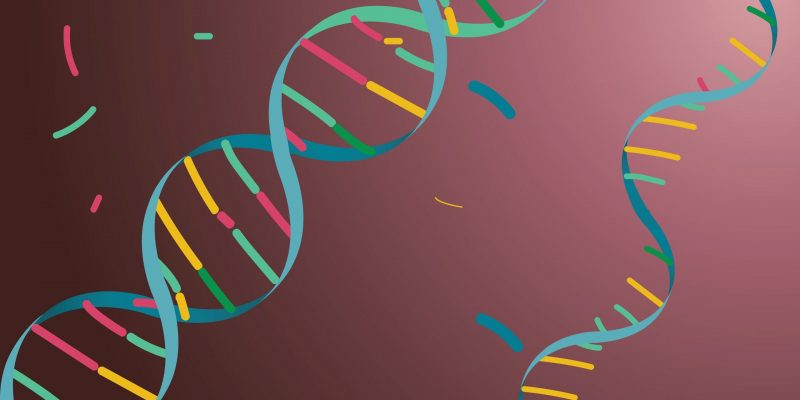The nucleic acids They are the fundamental polymers for the construction of life. They are gigantic chains of molecules (monomers) called nucleotides (molecules made up of a pentose, a nitrogenous base and a phosphate group), linked together by covalent bonds (phosphodiester). All the genetic information of a living organism resides in nucleic acids. For example: Deoxyribonucleic Acid, Peptide Nucleic Acid, Glycolic Nucleic Acid.
These acids control and direct the synthesis of all the proteins that make up a living being, as well as their specificity and their role in each of the vital processes. In addition, they are key in reproduction, since they allow the formation of new chains that will constitute an entirely new individual.
The name of nucleic acids comes from their location in the cell nucleus, from where they were first extracted in 1869 by Johann Friedrich Meischer.
There are two different types of nucleic acids in all living things:
- Deoxyribonucleic acid (DNA).
- Ribonucleic acid (RNA).
They are structurally distinguished in that the DNA has the sugar deoxyribose, while the RNA it has ribose. Their constitutive nitrogenous bases also differ: DNA has adenine, guanine, cytosine and thymine, while RNA replaces the latter with uracil. On the other hand, DNA is made up of two helix-type strands and RNA is made up of only one.
Both nucleic acids fulfill different functions in the processes of biological synthesis: DNA is primarily responsible for encoding information to synthesize proteins, while RNA is responsible for the synthesis of proteins.

Examples of nucleic acids
- Deoxyribonucleic Acid (DNA). Structured in two nucleotide chains linked together by hydrogen bonds, it can appear linearly (in eukaryotic cells) or circular (in prokaryotes and in eukaryotic mitochondria and chloroplasts). Single-stranded DNA may exist in some viruses. All the genetic information necessary for the individual’s cellular functioning is found in DNA.
- Ribonucleic Acid (RNA). Unlike DNA, it is single-stranded (except in specific cases) and its structures are usually shorter. If DNA contains the genetic information (the pattern), RNA is the executor of that information in various fields. There are three types of RNA involved in protein synthesis:
- Messenger RNA (mRNA). Synthesized in the cell nucleus, its function is to carry genetic information from DNA to cellular ribosomes, to print the synthesis of amino acids from protein chains. Once that is done, it is destroyed.
- Transfer RNA (tRNA). They are small single-chain molecules, whose role is to lead the amino acids to the ribosomes, following the sequence transmitted by the messenger RNA and thus shaping the proteins to be synthesized.
- Ribosomal RNA. It is the most abundant of the three (80% of the total), it is part of the cellular ribosomes, where the transcription of the template is made and the new proteins are synthesized.
There are, in addition, other nucleic acids synthesized in the laboratory, that is, not present in any form of nature and that are analogous to DNA and RNA:
- Peptidonucleic acid or peptide nucleic acid. It is built from the substitution of the phosphate-ribose bridge (in RNA) or phosphate-deoxyribose (in DNA), with classic peptide bonds of 2- (N-aminoethyl) glycine.
- Blocked nucleic acid (morpholino). Using a morpholine ring (C4H9NO) instead of sugars, it has been possible to produce this nucleic acid, with which it was possible to intervene in the replication of messenger RNA under certain conditions and organisms to develop genetic and pharmaceutical (antibacterial) treatments.
- Glycolic nucleic acid. Formed from the substitution of sugars for glycerol, it is capable of very stable binding to natural DNA and RNA, being a simplified form of nucleic acid. That is why it is speculated that it is the evolutionary precursor of the current ones.
- Threosic nucleic acid. Use a treose in place of the ordinary RNA and DNA pentoses. Given its ability to bind to RNA, it is estimated that it could have been its evolutionary precursor.
- Chemeroplasts. Used in gene therapy, they are nucleic acids of a hybrid nature (RNA and DNA) that are used in genetic correction and replacement strategies.
